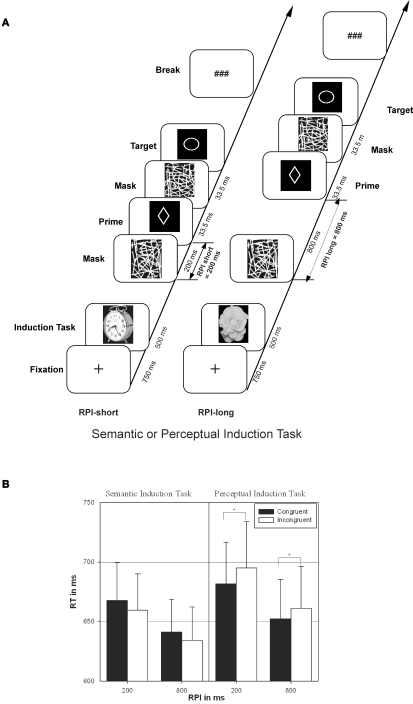Figure 1.
(A) Induction task paradigm in combination with a masked visuo-motor priming task. The masked prime shape was presented either 200 ms or 800 ms following the response to the induction task (response prime interval, RPI) that is intended to elicit the corresponding task set. The RPI was varied in order to capture the temporal dynamics of task set activation. The semantic induction task required semantic classification (forced choice living/non-living decision) of the inducing picture, whereas the perceptual induction task required a forced choice perceptual classification decision of the pictured object (round/elongated shape). Subsequent to masked prime presentation, the target shape was presented, which required a right- or left-hand response. In the congruent priming condition, prime and target shape afforded the same manual response whereas in the incongruent condition, prime and target were associated with different response hands. (B) Behavioral unconscious visuo-motor priming effects of Exp. 2 of the Martens et al. (2011) study. Mean correct response times and their standard error in the target shape discrimination task, as a function of response congruency, induction task, and RPI. The asterisks indicate significant masked priming effects (difference between incongruent and congruent prime-target responses) within each induction task/RPI combination. Significant unconscious visuo-motor priming effects were only obtained following the perceptual induction task, but not following the semantic induction task. Modified after Kiefer and Martens (2010) and after Martens et al. (2011).

